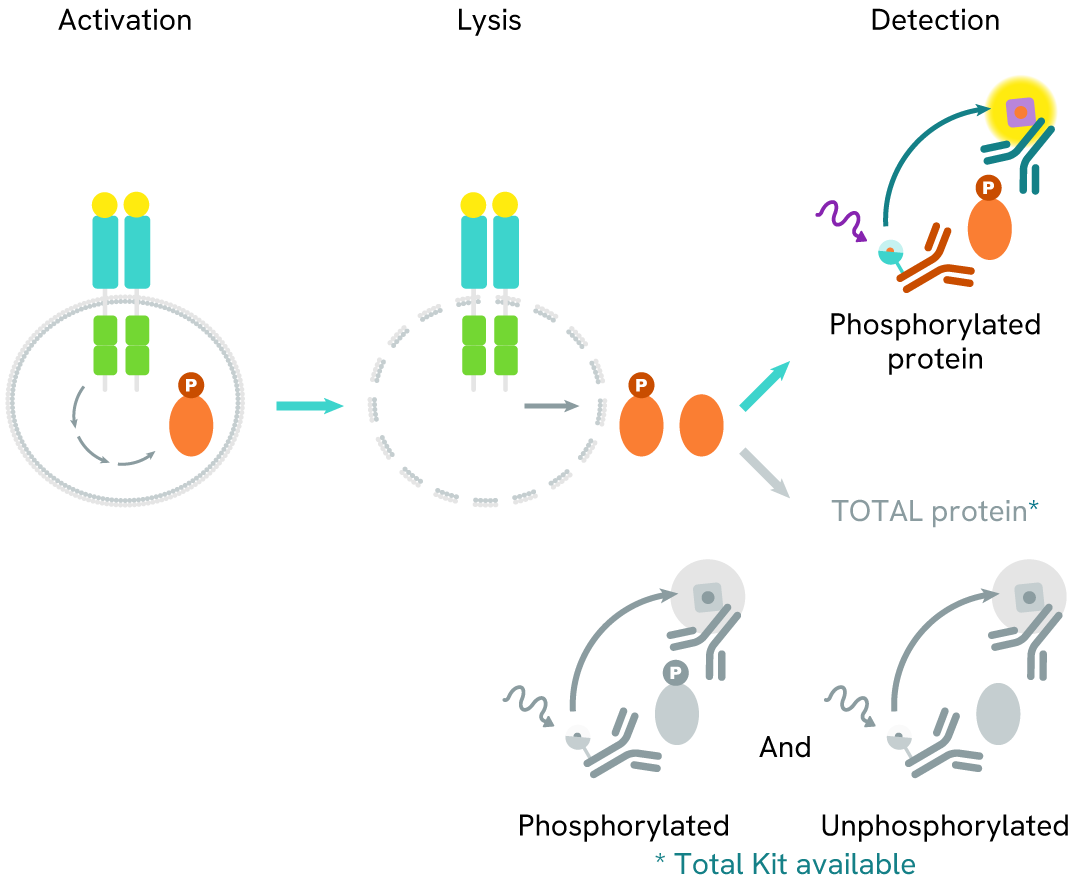

HTRF Phospho-c-RAF (Ser43) Detection Kit, 500 Assay Points
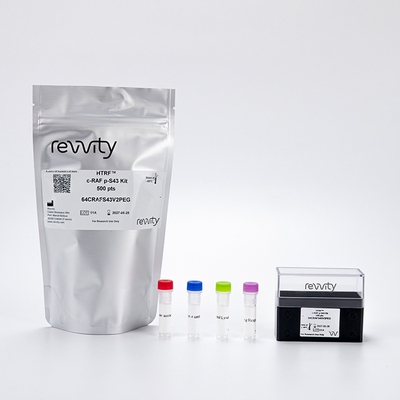
HTRF Phospho-c-RAF (Ser43) Detection Kit, 500 Assay Points
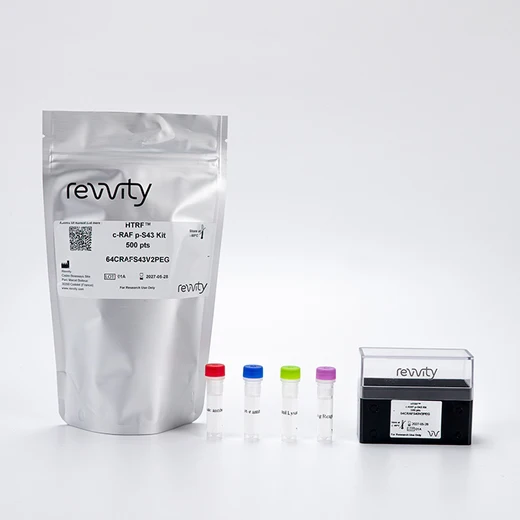

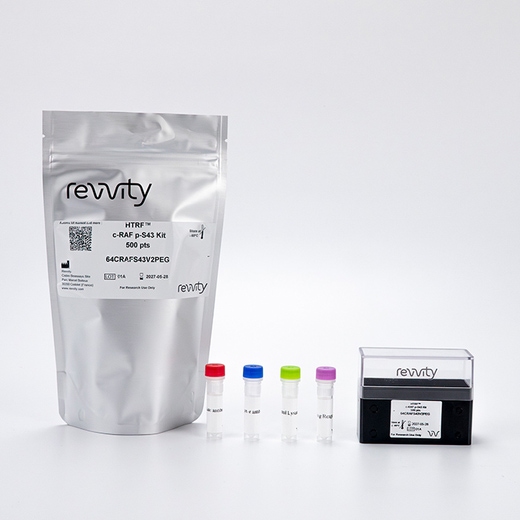

This HTRF kit allows for the cell-based quantitative detection of c-RAF when phosphorylated at Ser43.
| Feature | Specification |
|---|---|
| Application | Cell Signaling |
| Sample Volume | 16 µL |
This HTRF kit allows for the cell-based quantitative detection of c-RAF when phosphorylated at Ser43.


HTRF Phospho-c-RAF (Ser43) Detection Kit, 500 Assay Points


HTRF Phospho-c-RAF (Ser43) Detection Kit, 500 Assay Points


Product information
Overview
cRaf is a proto-oncogene serine/threonine-protein kinase. The RAS-RAF-MEK signaling cascade plays a pivotal role in modulating cellular processes such as proliferation, differentiation, and survival. This pathway is often constitutively activated in human malignancies characterized by RAS or RAF oncogenic drivers. Developing chemotherapeutic cRaf inhibitors is an attractive area of research in oncology and infectious disease.
Specifications
| Application |
Cell Signaling
|
|---|---|
| Brand |
HTRF
|
| Buffer/Solvent |
Lysis Buffer 2
|
| Detection Modality |
HTRF
|
| Host Species |
Human
|
| Lysis Buffer Compatibility |
Lysis Buffer 1
Lysis Buffer 2
|
| Molecular Modification |
Phosphorylation
|
| Product Group |
Kit
|
| Sample Volume |
16 µL
|
| Shipping Conditions |
Shipped in Dry Ice
|
| Target |
cRAF
|
| Target Class |
Phosphoproteins
|
| Technology |
TR-FRET
|
| Therapeutic Area |
Inflammation
Oncology
|
| Unit Size |
500 Assay Points
|
How it works
Phospho-cRAF (Ser43) assay principle
The Phospho-cRAF (Ser43) assay measures cRAF when phosphorylated at Ser43. Unlike Western Blot, the assay is entirely plate-based and does not require gels, electrophoresis, or transfer. The assay uses 2 antibodies, one labeled with a donor fluorophore and the other with an acceptor. The first antibody was selected for its specific binding to the phosphorylated motif on the protein, and the second for its ability to recognize the protein independently of its phosphorylation state. Protein phosphorylation enables an immune-complex formation involving both labeled antibodies, and which brings the donor fluorophore into close proximity to the acceptor, thereby generating a FRET signal. Its intensity is directly proportional to the concentration of phosphorylated protein present in the sample and provides a means of assessing the protein's phosphorylation state under a no-wash assay format.

Phospho-cRAF (Ser43) two-plate assay protocol
The two-plate protocol involves culturing cells in a 96-well plate before lysis, then transferring lysates into a 384-well low volume detection plate before the addition of Phospho-cRAF (Ser43) HTRF detection reagents. This protocol allows for the cells' viability and confluence to be monitored.
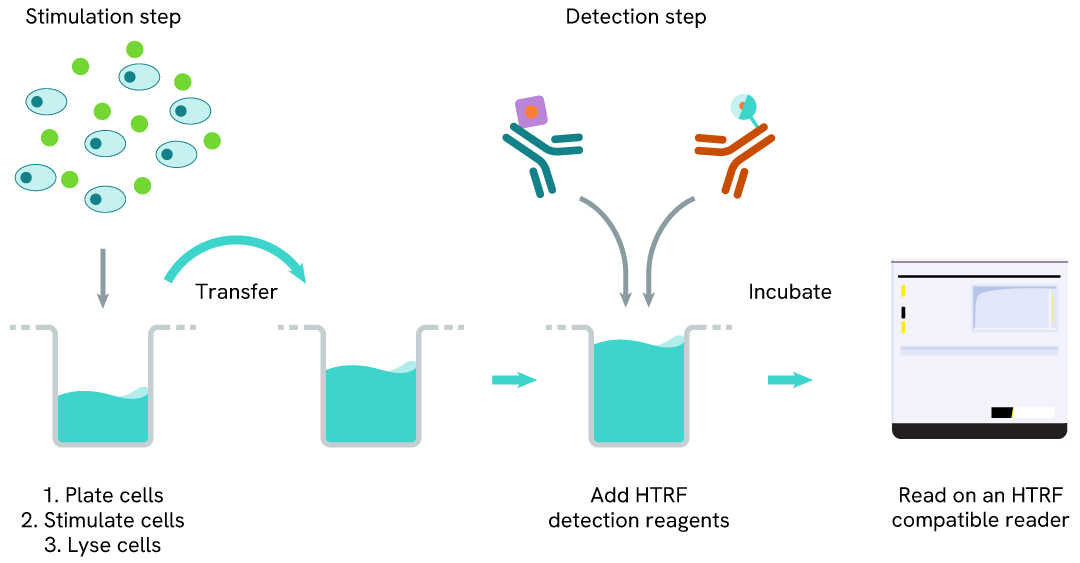
Phospho-cRAF (Ser43) one-plate assay protocol
Detection of Phosphorylated cRAF (Ser43) with HTRF reagents can be performed in a single plate used for culturing, stimulation, and lysis. No washing steps are required. This HTS designed protocol facilitates miniaturization while maintaining HTRF quality.
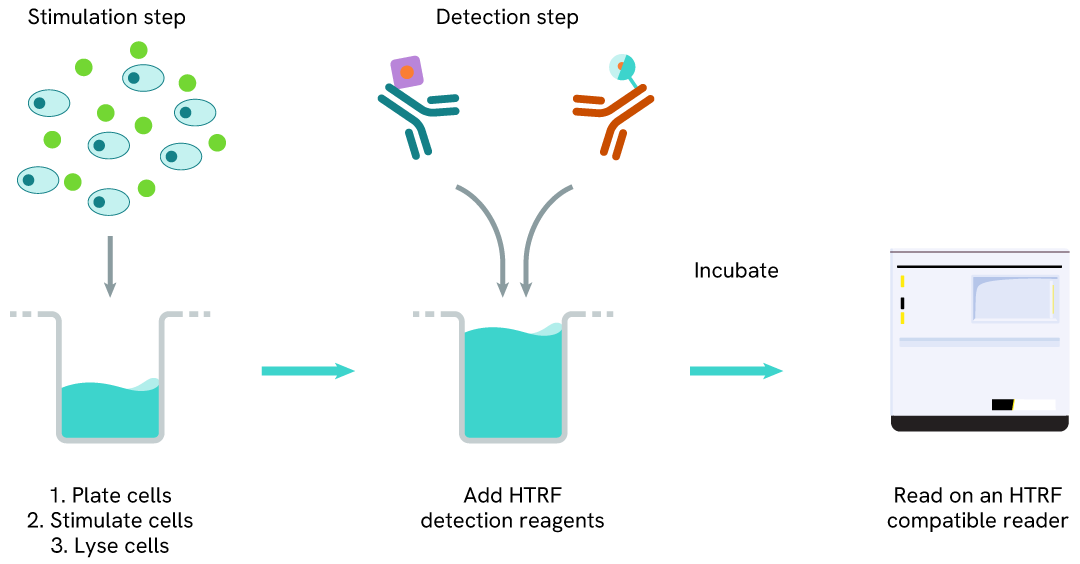
Assay validation
Induction of phospho-cRAF (Ser43) in Hela cells
Hela cells were seeded in a 96-well culture-treated plate (100,000 cells/well) in complete culture medium, and incubated overnight at 37°C, 5% CO2. The cells were treated for 15 minutes with increasing concentrations of phorbol 12-myristate 13-acetate (PMA).
After treatment, the cells were lysed with 50 µL of supplemented lysis buffer #2 for 30 minutes at RT under gentle shaking. For the detection step, 16 µL of cell lysate were transferred into a 384-well low volume white microplate and 4 µL of the HTRF Phospho-cRAF (Ser43) or Total cRAF ( # 64CRAFTPEG/H/Y) detection reagents were added. The HTRF signal was recorded after an overnight incubation. In parallel, the cell viability was assessed. To this end, 5 µL of the same lysate were transferred in an HTRF 96-well low volume white plate (# 66PL96005/025/100) and 25 µL of ATPlite 1step detection reagent were added (# 6016736/1/9). The luminescence signal was measured after a 10-min incubation in the dark at RT.
As expected, PMA triggered a dose-dependent increase of Phospho-cRAF (Ser43). In addition, the compound does not affect the cell viability as measured by cell viability indicator ATPLite.
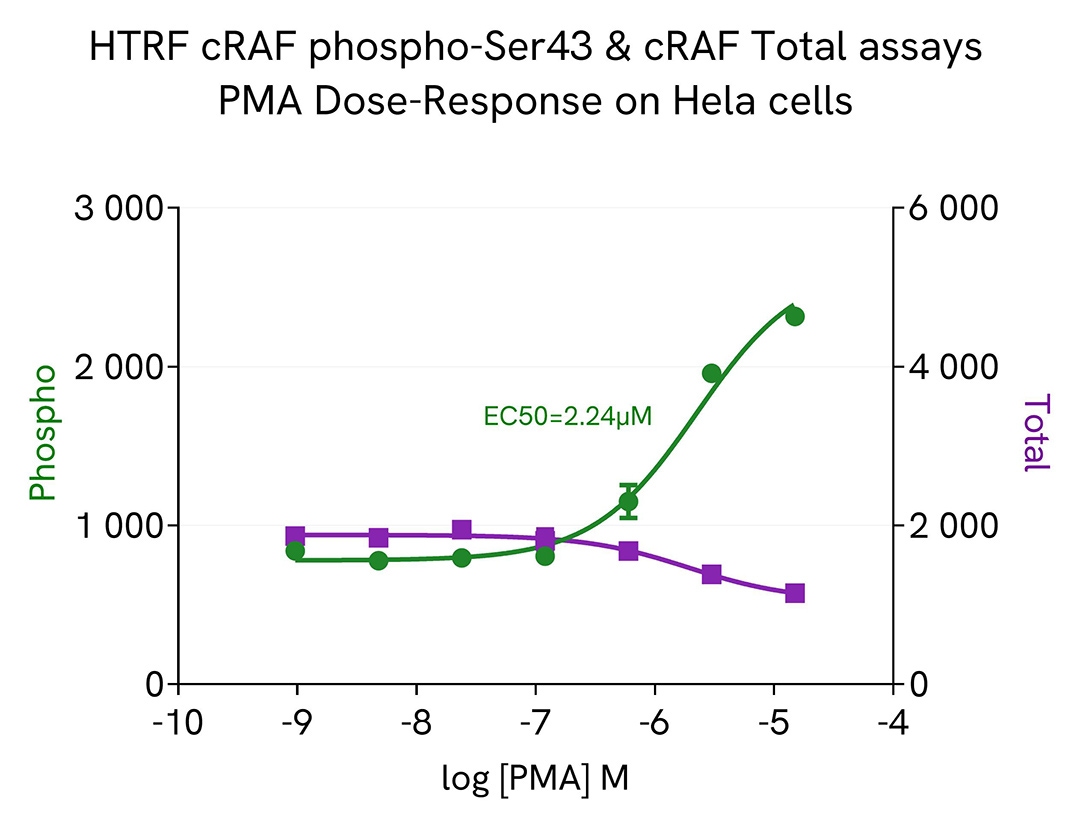
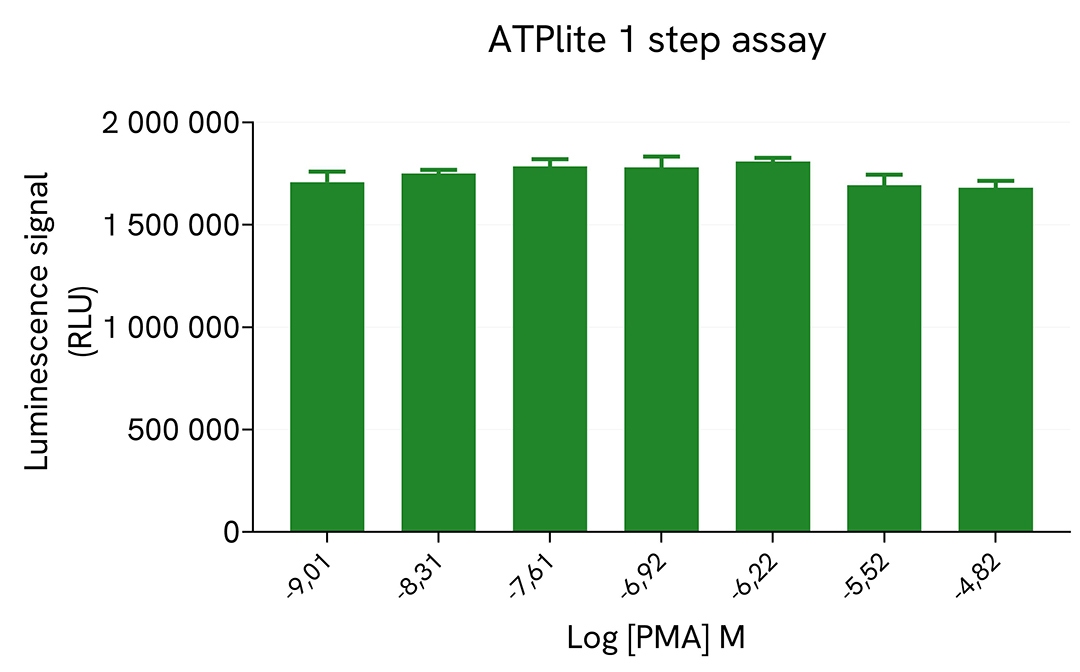
Specificity of phospho-cRAF (Ser43) assay using HAP-1 KO cell lines
The Phospho-cRAF (Ser43) protein levels were assessed with the HTRF Phospho-cRAF Ser43 kit in HAP1 cells (WT) and different HAP1 cell lines Knocked-Out for cRAF, ARAF and BRAF.
The different cell lines were plated in a 96-well plate (100,000 cells/well) and cultured for 24h. The cells were then stimulated with PMA (20µM, 15 min). After treatment, the cells were lysed with 50 µL of supplemented lysis buffer #2 for 30 minutes at RT under gentle shaking.
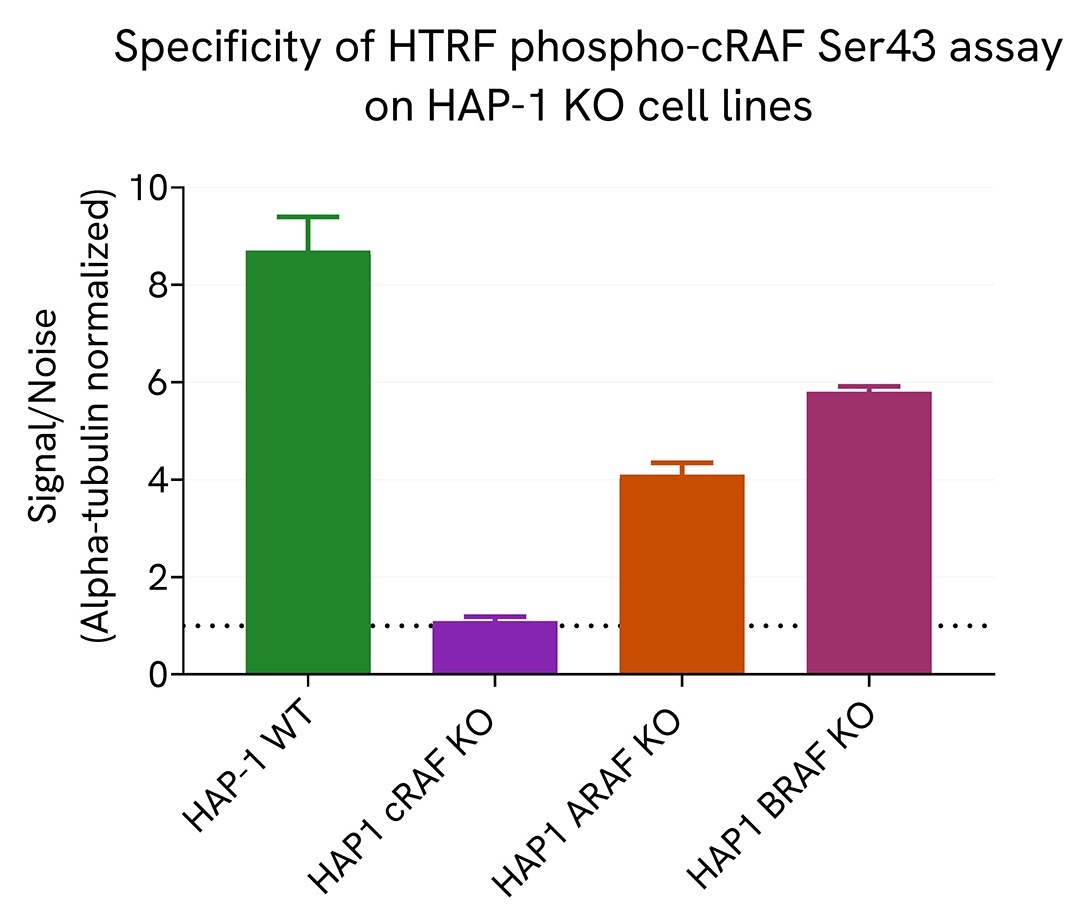
For the detection step, 16 µL of cell lysate were transferred into a 384-well low volume white microplate and 4 µL of the HTRF phospho-cRAF (Ser43) detection reagents were added. An additional 4 µL of lysates (supplemented with 12 µL diluent #8) was also transferred into the microplate to monitor the alpha-tubulin level using the HTRF Alpha-tubulin Housekeeping Cellular Kit (64ATUBPEG/H). HTRF signal was recorded after an overnight incubation.
In HAP1-cRAF KO cells, the HTRF signal was equivalent to the non-specific signal (dotted line), indicating a complete cRAF gene silencing, whereas the phospho-cRAF (Ser43) level was well detected in the other cell line, as expected.
Revvity's catalog reference: HAP1-cRAF KO #HZGHC002807c010, HAP1-ARAF KO #HZGHC002806c004 and HAP1-BRAF KO #HZGHC000002c001
HTRF phospho-cRAF (Ser43) assay compared to Western Blot
HEK293 cells were grown in a T175 flask in complete culture medium at 37°C - 5% CO2 until 80% confluence. Cells were PMA stimulated (20µM, 15min) and lysed with 3 mL of supplemented lysis buffer#2 (1X) for 30 minutes at RT under gentle shaking.
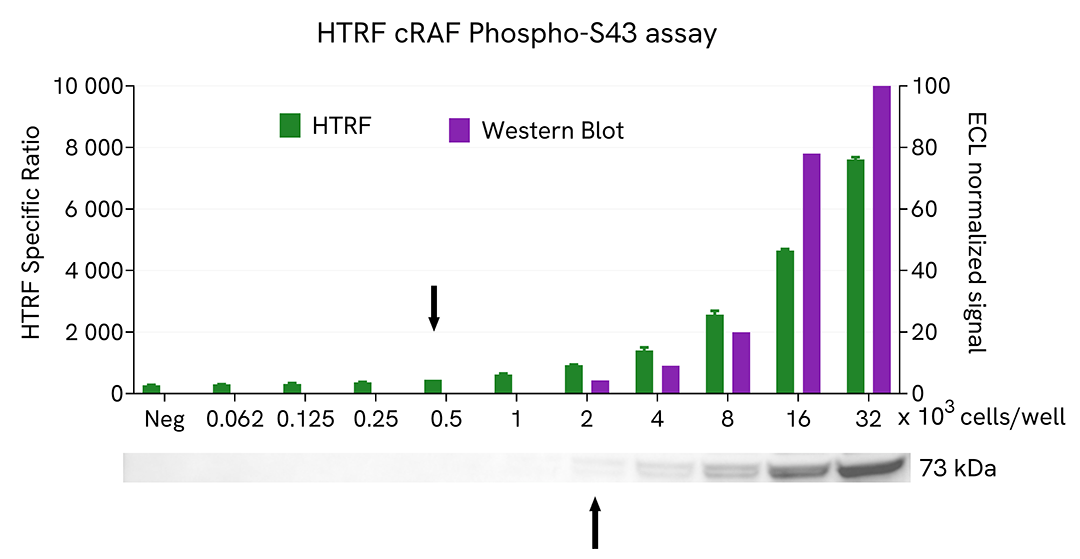
Serial dilutions of the cell lysate were performed using supplemented lysis buffer, and 16 µL of each dilution were transferred into a low volume white microplate before the addition of 4 µL of HTRF Phospho-cRAF (Ser43) detection reagents. Equal amounts of lysates were used for a side-by-side comparison between HTRF and Western Blot.
Using the HTRF phospho-cRAF (Ser43) assay, 500 cells/well were enough to detect a significant signal, while 2000 cells were needed to obtain a minimal chemiluminescent signal using Western Blot. Therefore, in these conditions, the HTRF Phospho-cRAF (Ser43) assay was 4 times more sensitive than the Western Blot technique.
Simplified pathway
cRAF signaling pathway
RAF proto-oncogene serine/threonine-protein kinase (c-RAF) is part of the MAP kinases pathway where it links the upstream effector Ras to the downstream MAPK/ERK cascade. It therefore plays roles in cell fate decisions including proliferation, differentiation, apoptosis, survival and oncogenic transformation.
c-RAF is activated by Ser338 phosphorylation as a direct or indirect effect of PKC, or by GTP-bound Ras directly. Inactivation is ensured by the phosphorylation at Ser43 via MAPK/ERK-dependent feedback.
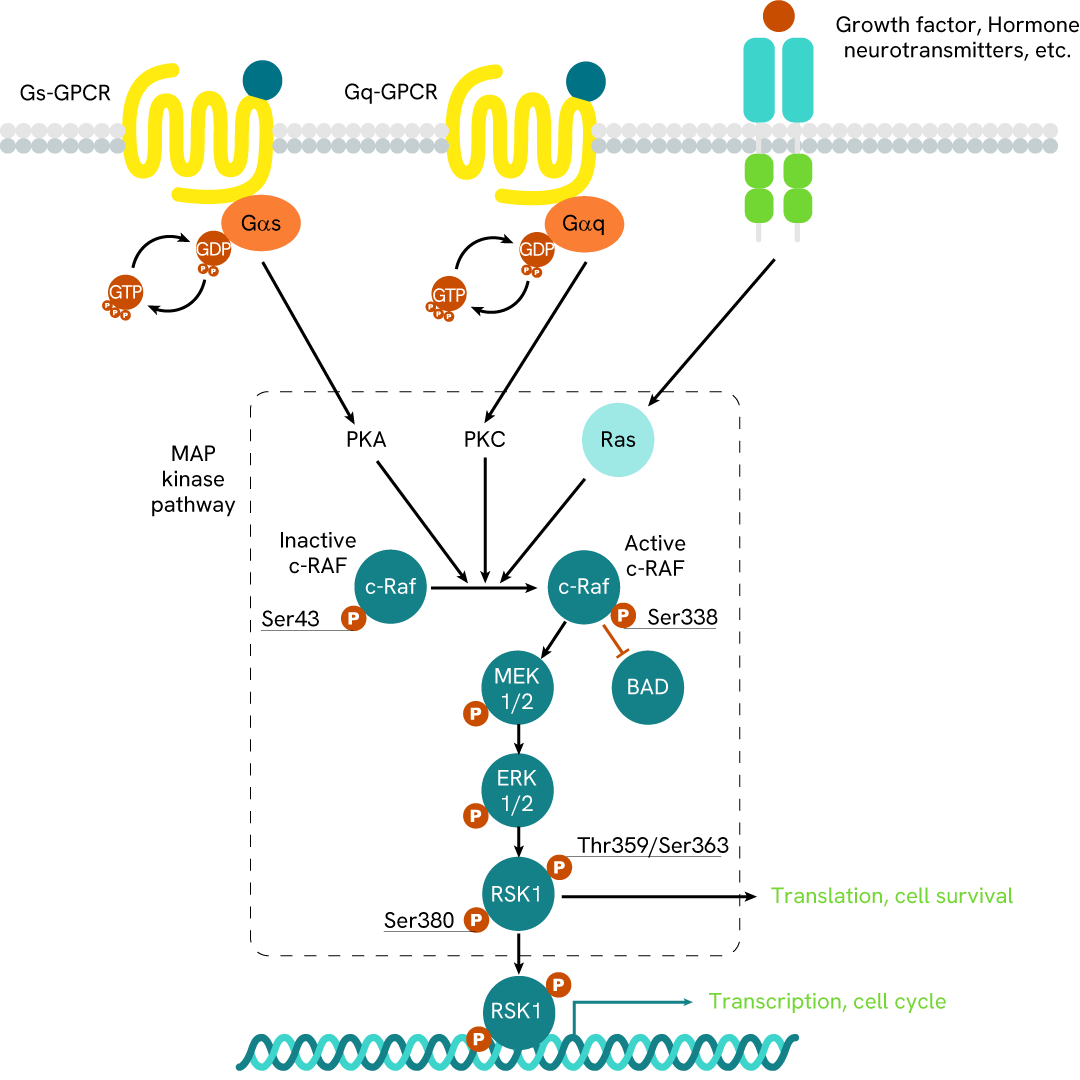
Resources
Are you looking for resources, click on the resource type to explore further.
Discover the versatility and precision of Homogeneous Time-Resolved Fluorescence (HTRF) technology. Our HTRF portfolio offers a...
This document includes detailed tables listing HTRF™, AlphaLISA™ SureFire® Ultra™, and Alpha SureFire® Ultra™ Multiplex assays...


How can we help you?
We are here to answer your questions.






























